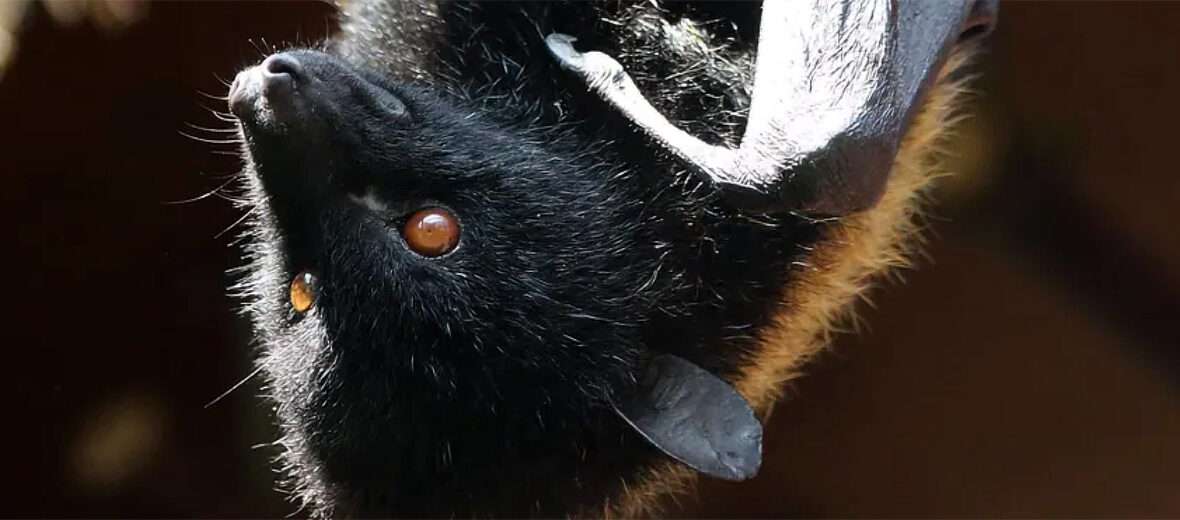
The Livingstone’s fruit bat, aka Comoro flying fox, is a megabat species found only on the islands of Anjouan and Mohéli in the Union of the Comoros in the western Indian Ocean. These bats face the threats of habitat loss and destruction at the hands of residential and commercial developments, wood and pulp plantations, and the logging industry; hunting; trapping; and climate change, that can cause severe storms. The IUCN lists these incredible megabats as Endangered. Their population trend is listed as stable… for now.
First the Stats…
Scientific name: Pteropus livingstonii
Weight: Up to 28 ounces
Length: Up to 12 inches
Wingspan: Up to 4.7 feet
Lifespan: Up to 30 years
Now on to the Facts!
1.) There were only an estimated 1,200 – 1,500 wild individuals remaining as of 2024.
2.) The Union of the Comoros is situated between eastern Africa and Madagascar.
3.) They prefer montane forest habitats at elevations of up to 1,600 feet.
4.) There are no currently recognized subspecies of these bats.
5.) Having a rather slow, flapping flight style, they utilize thermals to maintain flight; unlike other nocturnal (active at night) bats.
But wait, there’s more on the Livingstone’s fruit bat!
6.) These megabats are cathemeral (active both day and night) with the primary concentration being at night.
7.) Only 15 roost-sites are currently utilized in Anjouan and 6 at Moheli.
Did you know…?
The IUCN developed an action plan for the species in 1995 which included community education programs, research, and training of bat monitoring.
8.) Fruit, leaves, nectar, pollen, and seeds are all feasted upon.
9.) Intruders are thwarted via chattering sounds, clapping their wings, chasing away, and sometimes biting and clawing is resorted to.
10.) When startled they will produce various squeaking sounds or a deep array of “clucks”.
But wait, there’s still more on the Livingstone’s fruit bat!
11.) Females undergo up to a 152 day gestation (pregnancy) that yields a single pup.
12.) Pups are born fully furred and with eyes open, using their large feet to grip onto their mother.
Did you know…?
Due to their imperiled status, they have been identified by the Alliance for Zero Extinction as a species in danger of imminent extinction.
13.) In up to 5 months the pups will start to forage for their own food, and in up to 6 months males will begin to establish territories.
14.) A captive-breeding program was establish by the Durrell Wildlife Conservation Trust in 1992. Having a captive-breeding program canpossibly save these bats from going completely extinct.
15.) The Durrell Wildlife Conservation Trust stated, “If the bats’ natural habitat is not protected, this amazing species could be extinct within 10 years”.
Now a Short Livingstone’s Fruit Bat Video!
This video talks about fruit bats in general.
Be sure to share & comment below! Also, check out the Critter Science YouTube channel. Videos added regularly!

Want to suggest a critter for me to write about? Let me know here.
Some source material acquired from: Wikipedia & IUCN
Photo credit: Fauna Focus



